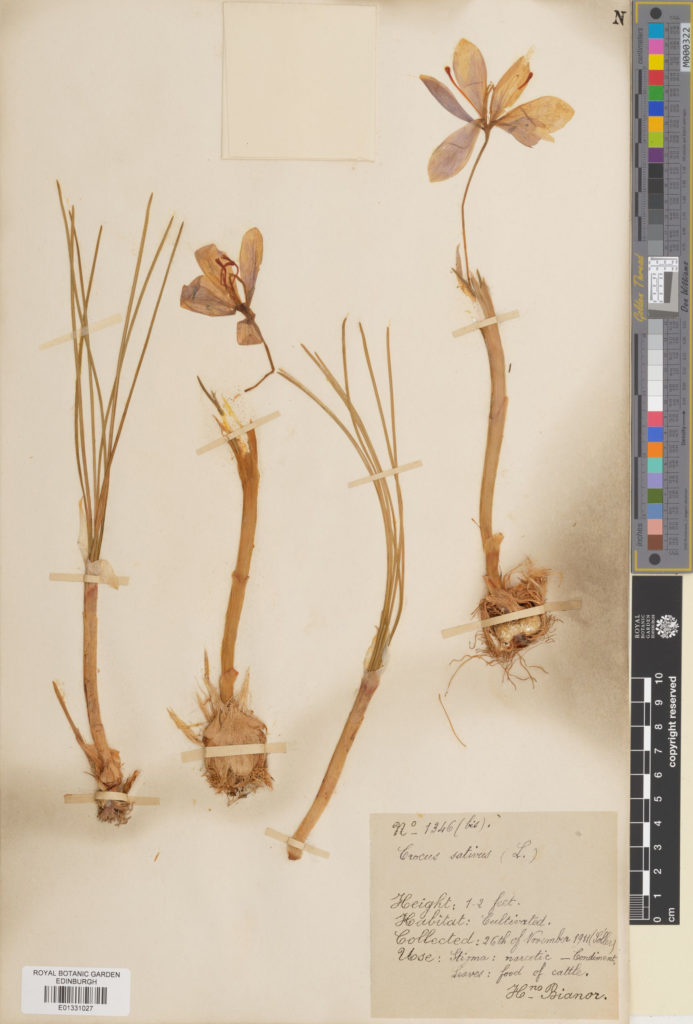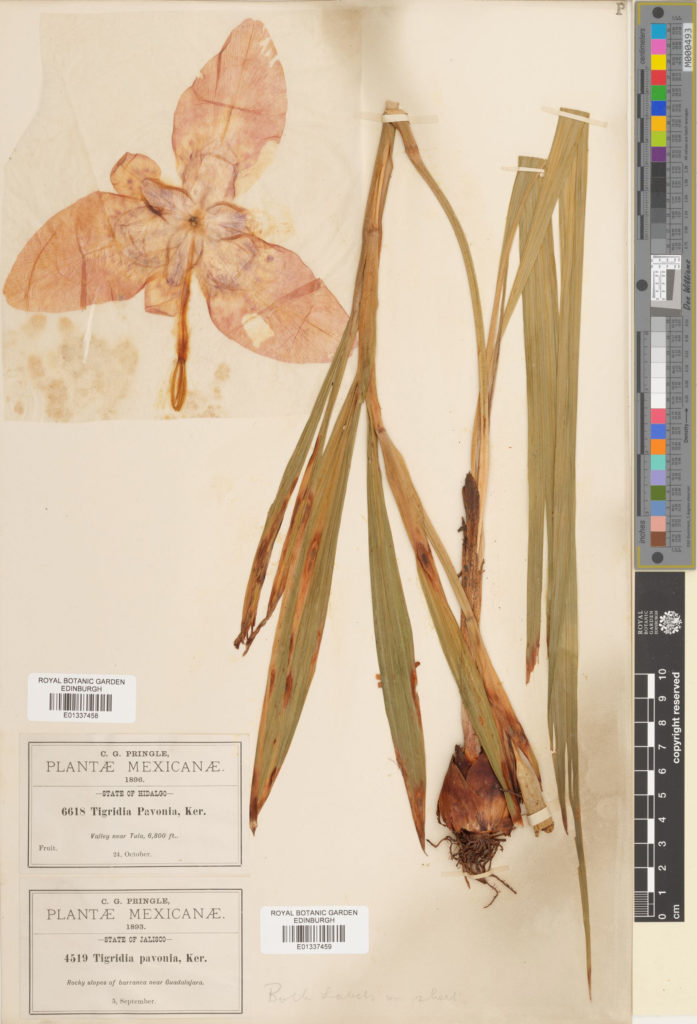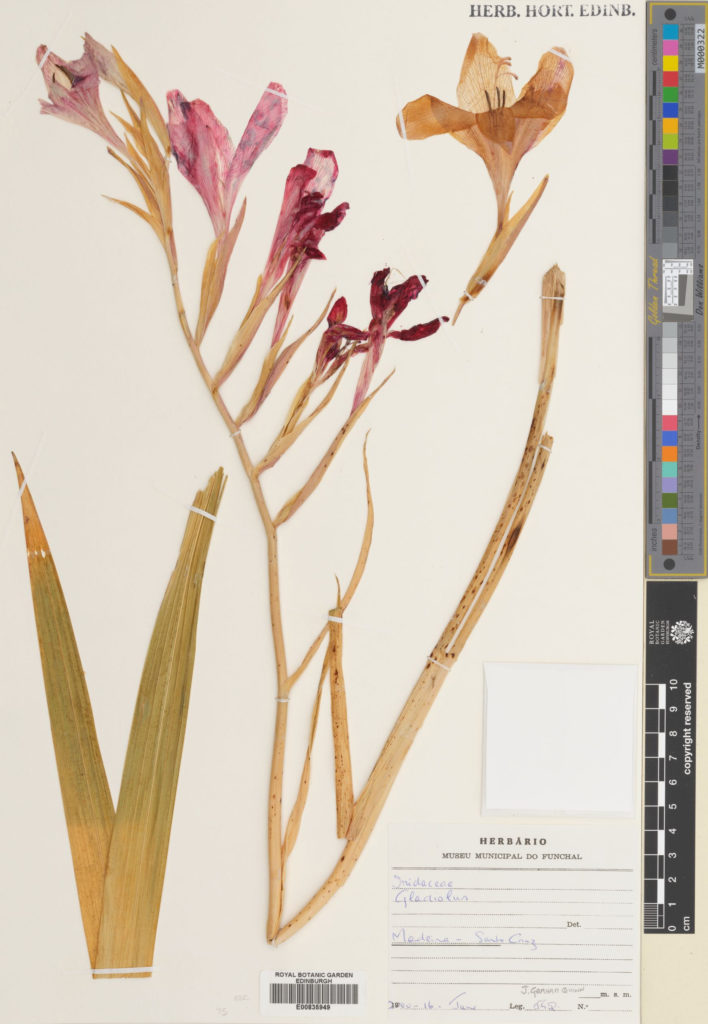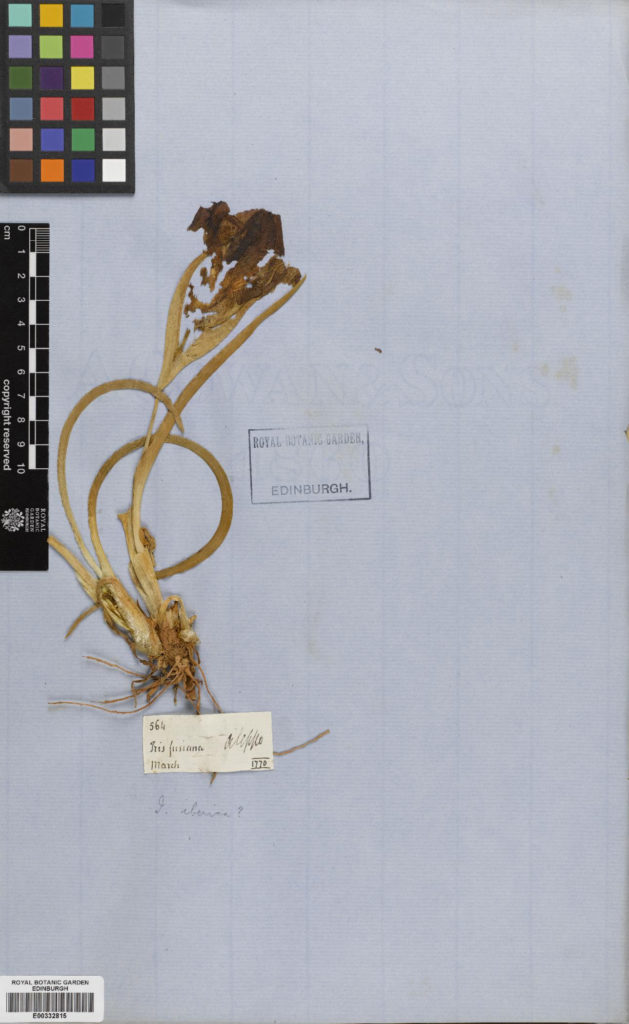The following blog was written by Iain Ratter a digitiser in the Herbarium.
Since 2021 we have increased our digitisation capacity with the goal of getting to 1 million specimens imaged by Autumn 2024. Each digitiser is assigned a family of plants to work through. This series of blogs will spotlight the families that have been completed by a member of the team.
The Iridaceae family is one of the most familiar to gardeners the world over. Its distribution is global, and it takes its name from the Iris, a very popular genus that are cultivated for their beauty. Examples of ornamental Iris varieties include the ‘Aachen Prince’, the ‘Dame de Cour’, and ‘Gnu Again’.
The family has been cultivated and admired by humans for thousands of years. For instance, saffron, one of the most popular and widespread spices, is the dried stigmas and styles of Crocus sativus, a member of this family. The Fleur-de-lis, a symbol associated with the French monarchy but with even older roots, is derived from the iris and in some east Asian cultures they are used to ward off snakes and evil spirits.

Setting aside flowers, the roots of Iridaceae also have their uses. Orris oil is derived from the root of Iris species and is an excellent fixative for perfumes whilst the roots of Tigridia, known as cacomitl to the Aztecs were cultivated as an edible in pre-Colombian Mexico.

But the Iridaceae are also interesting in and of themselves. They are notable for their extremely close relationships with their Hymenoptera pollinators (Bees, wasps etc.) which inspired the categorisation of pollinator syndromes, a combination of floral traits that are closely associated with a particular pollinator species. This is particularly notable in Gladiolus whose odours vary wildly between species and whose flowers show complex and varied opening patterns

This specificity in pollinator species is believed to be one of the most important factors in the diversity of the family.
Our collections
Before the digitisation project started we had 3,013 specimens catalogued in Iridaceae, following the project we have 8,730 specimens in our catalogue. Of these there are 238 types.
To view our Iridaceae specimens on our online catalogue click here.
Top 5 Genera
| No. of Specimens | Genus |
| 2,666 | Iris |
| 990 | Crocus |
| 972 | Gladiolus |
| 567 | Sisyrinchium |
| 479 | Dierama |
Top 5 regions
| No. of Specimens | Herbarium Filing Region |
| 2,701 | Southern Africa |
| 1,221 | West Asia and Egypt |
| 1,106 | Europe excl. Britain and Ireland |
| 706 | Cultivated |
| 589 | Inner China, Korea and Taiwan |

